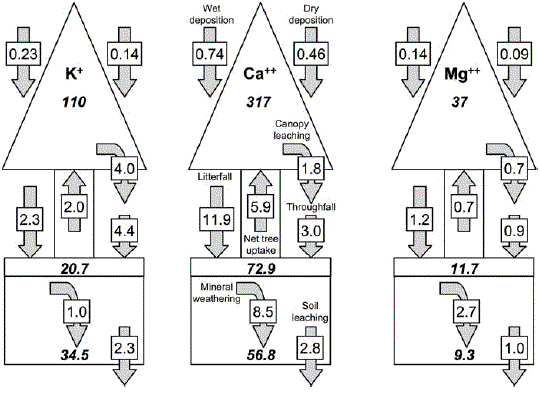
Figure 3. Illustration of base cation cycling at the Lake Tirasse watershed.
※太い数字はストックで kg ha-1単位、四角内の数字はフローで kg ha-1 年-1単位。
〔Duchesne & Houle(2006)による〔『Base cation cycling in a pristine watershed of the Canadian boreal forest』(195p)から〕〕
『Abstract
Base cation cycling was investigated on the Canadian Shield in
a pristine catchment of the boreal forest. An input-output budget
(atmospheric deposition - stream exports) for the whole watershed
indicated that nitrogen (N) was strongly retained, while sulphur
(S) and base cations (K, Ca, Mg) were lost. The S losses are attributed
to internal sources, such as SO4 desorption
and/or mineralisation of soil organic-S. The base cation losses
at the catchment scale, however, might be contributed by weathering
of the till below the rooting zone, which has little ecological
significance. For this reason, a detailed budget of basic cations,
including atmospheric deposition, tree uptake, mineral weathering
and leaching losses was constructed for the soil rooting zone
of a stand representative of the forest covering the catchment.
Different scenarios of tree uptake (whole tree and stem-only harvesting),
weathering rates (PROFILE modelled values, PROFILE modelled values
corrected for soil Na leaching) and soil leaching losses (depth
of 22 and 81 cm) were considered. The element budgets were summed
for the 1997-2003 (7 years) period. In every scenario, K was lost
(-35.5 to -1.2 kg ha-1) from the exchangeable reservoir.
Gain or losses of Ca were observable, depending of the scenario
considered (28.8 to -20.1 kg ha-1) while Mg (-0.8 to
13.3 kg ha-1) generally accumulated over the 7-year
period. The absolute K losses are very important, given the very
small K soil exchangeable reservoir (55.2 kg ha-1)
at the site. Because the amount of K sequestered in biomass (110
kg ha-1) is twice the amount found in the exchangeable
soil reservoir, this forest is very sensitive to commercial forestry
operations and forest harvesting appears as the main pathway of
base cation losses. This raises important questions regarding
the sustainability of the boreal forest that lies on K-poor soils
of the Canadian Shield.』
Introduction
Methods
Site description
Sampling and analysis
Precipitation, throughfall, soil solutions and stream solutions
Tree uptake of nutrients
Soil basic cations pool and weathering release rate
Litter fall
Nutrient budget calculation
Statistical analysis
Results
Trend analyses
Input-output watershed budget
Rooting zone budget
Discussion
Precipitation: composition and trends
Watershed budgets
Soil rooting zone basic cations budget
Throughfall fluxes
Tree uptake of nutrients
Soil leaching and weathering
Net base cation budgets
Implications of K losses for forest sustainability
Conclusion
Acknowledgements
References
 Figure 3. Illustration of base cation cycling at the Lake Tirasse watershed. ※太い数字はストックで kg ha-1単位、四角内の数字はフローで kg ha-1 年-1単位。 〔Duchesne & Houle(2006)による〔『Base cation cycling in a pristine watershed of the Canadian boreal forest』(195p)から〕〕 |